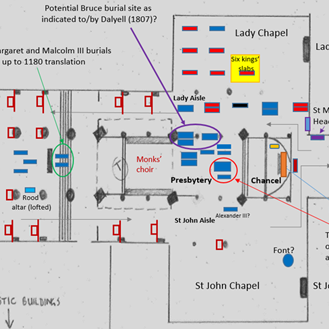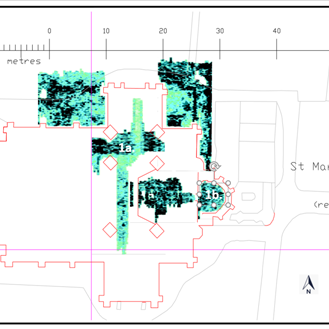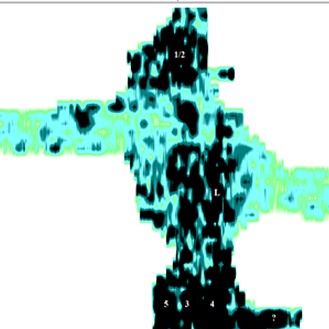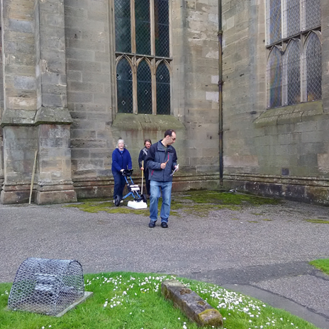Reframing history
Since 2015, Stirling researchers – led by Dr Michael Penman – have uncovered evidence for the true internal layout of the church and radically reframed people’s understanding of this significant site.
Bringing together the Abbey’s custodians, the Abbey Church Kirk Session, Fife Council and Historic Environment Scotland (HES) with local groups, Stirling’s interdisciplinary investigations have preserved, championed and redeveloped this major heritage attraction.
Using a combination of historical research, ground-penetrating radar and liturgy and digital visualisation, Dr Penman and colleagues Professor Richard Oram (Dean of the Faculty of Arts and Humanities) and Dr Thomas Turpie (History Research Assistant and Lecturer), working with radar expert Erica Carrick Utsi, revealed the Abbey’s true and complex development over time.
The team uncovered evidence of the original layout of the choir of the Abbey and radar images allowed them to create a speculative plan of the lost medieval area, which was left ruinous following the Protestant Reformation in 1560.
Their work also found evidence for the lost high altar settings of the Abbey choir, a formerly unnoticed southern transept chapel and aisle dedicated to St John the Baptist, and detected a possible programme of Catholic worship and burial within the Abbey’s lost choir.
"We hope our work helps shift away from past over-focus on just a few elements of this famous site – chiefly Robert Bruce’s grave – and allows us to re-envisage the abbey as a complex spiritual and physical whole, evolving as a community over time."

/filters:format(webp)/prod01/cdn/media/stirling/services/research/images/dunfermline-abbey-illustration-1920X689.jpg)




/filters:format(webp)/prod01/cdn/media/stirling/services/research/images/dunfermline-abbey-1920X689.jpg)
/filters:format(webp)/filters:no_upscale()/prod01/cdn/media/stirling/services/research/images/dunfermline-abbey-578X358.png)
/filters:format(webp)/filters:no_upscale()/prod01/cdn/media/stirling/services/research/images/dunfermline-abbey-interior-578X358.png)
/filters:format(webp)/filters:no_upscale()/prod01/cdn/media/stirling/services/research/images/Dunfermline-Abbey-2-578X358.png)